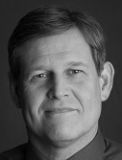I have been a member of Institute of Electrical and Electronics Engineers (IEEE) for many years but when at conferences, still, I am met with disbelief when people ask me about my field of work and I reply: "I am a physician".

Admittedly my one-in-three on call days are behind me and my focus has shifted to the more theoretical, academic field of Digital Health with all its complex interdependencies between technology, regulation, standardisation, policies and legislation. However, a surprised, almost shocked expression in the faces of some of my IEEE colleagues who are mostly engineers of some description shows me that there are still a lot of questions to answer on how Engineering and Medicine are related to each other. Likewise, when talking to my medical colleagues the term IEEE frequently seems not to ring a bell and some explanation is almost always required. Only very few colleagues are aware that I am talking about an organisation with 423,000 members in more than 160 countries.
There can be no doubt that physiology, the science of how our body works in the absence of disease, is based on physics and math. On the other hand the medical device industry from the syringe to the magnet-resonance scanner manufacturers would be unimaginable without the input from multiple engineering sub-disciplines. So no surprise there. But saying that, where is the rational for joining an engineering association as a medical doctor? What can the IEEE do to enhance the quality of care and make a difference?
A good starting point is certainly to point to a huge variety of bio-medical recurrent IEEE conferences providing a platform for international, independent academic and industrial research and development. This is pushing the boundaries with regards to ground-breaking innovative technologies aiming to provide new diagnosis and treatment options.
Second, the different interest groups within the IEEE societies provide opportunities to modulate and moderate upcoming technologies with regards to standardisation and interoperability. By boosting the dialogue between technology “makers” and “users” application domains can be identified and the development process can be streamlined. This allows for innovative treatment technologies to reach the point of care quicker, so that patients can benefit earlier.
Third, IEEE provides a number of extremely relevant and useful activities and standards such as the “Framework for Prognostics and Health Management of Electronic Systems” or the IEEE 802.15.6 standard for body area networks and many more. These standards are highly important to provide assurance and avoid uncertainty at the point of care.
My personal passion lies in the area of 5th generation mobile networks, 5G, which is taking shape as we speak. Despite all the hard, factual evidence there is still a massive lack of awareness, not to say almost denial, by healthcare providers and governments of the seismic demographic and technological shifts we are witnessing at the beginning of the 21st century.
The way we deliver care has been changing massively. More and more people are being treated outside hospitals by informal carers and over the Internet. The conditions are mainly chronic and care models are shifting from centralised to distributed, patient centric models. However, this implies that more and more information processing needs to take place over the Internet, in (next to) real time in a safe and secure manner in order to allow the delivery of care anytime, anyhow and anywhere. This includes the management of diseases in “unusual” places such as on-board self-driving cars or during jogging.
Care will not be exclusively delivered in face-to-face sessions but (semi) - automated and more responsibility will be shifted to healthcare consumers including the management of their own data and their resources. At the same time more and more sensors and “artificial organs” will emerge, linking the real world with the virtual world (cyber-Physical Systems, Health 4.0).
As buzz-words such as “Precision Medicine”, “Blockchain” and “Population Health Management” keep on hitting us on a daily basis there can be no doubt that close cooperation between the medical and engineering community will become more and more a norm and IEEE certainly has the infrastructure to facilitate the much-needed dialogue.
Zoom On
What is your top management tip?
When having to prioritise tasks follow Eisenhower's matrix. Create an imaginary 4 field table, mapping urgent / non-urgent against important and not-important.
What would you single out as a career highlight?
Being assistant to Fritz Rau at Lippman and Rau in the 80s. Fritz Rau was an internationally recognised concert impresario. The company managed all the top acts of its days from Elton John and Depeche Mode to the Rolling Stones. Everything was moving at an incredible pace. You were 100% trusted and had to be 150% reliable. There was no smart phone, no computer and no room for error. I learned a lot about people and management from the best in the music business. It was fantastic to play a part, even though a very small one, in an organisation that gave people so much from a cultural point of view.
If you had not chosen this career path you would have become a…?
A Lawyer.
What are your personal interests outside of work?
I am still a keen music producer and love travelling.
Your favourite quote?
Albert Einstein: Logic
will get you from A to B, imagination will take you everywhere.
























